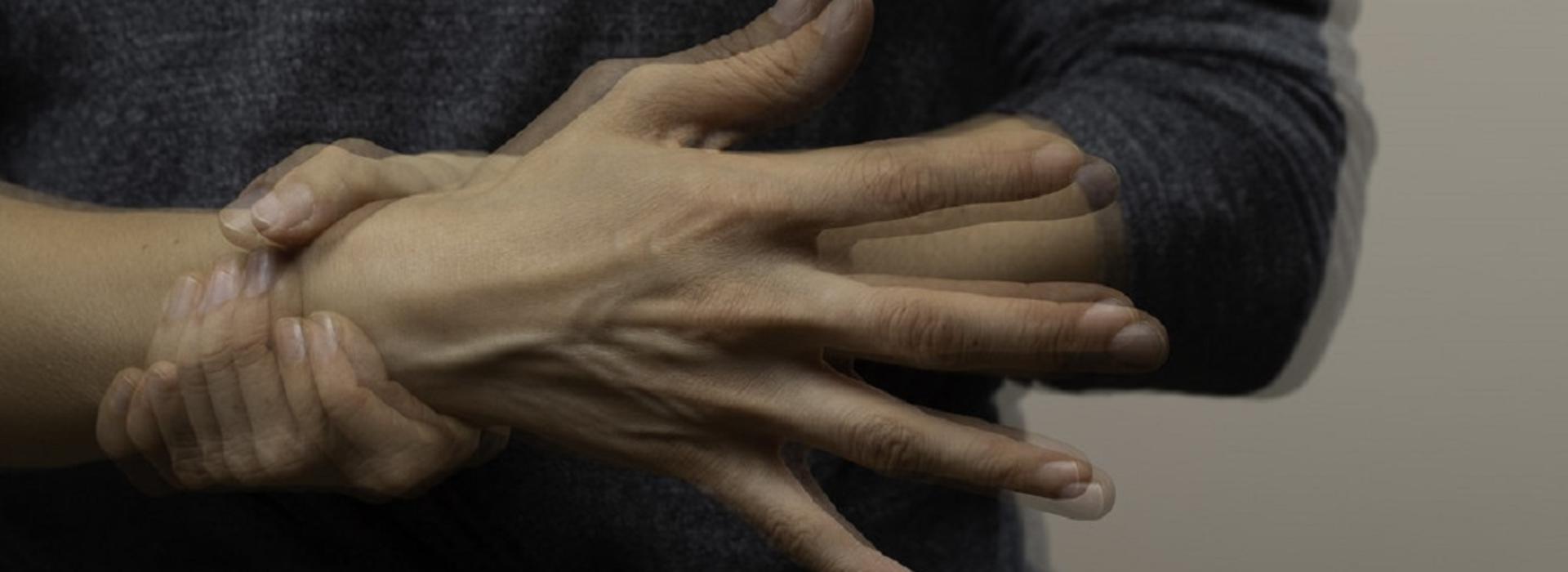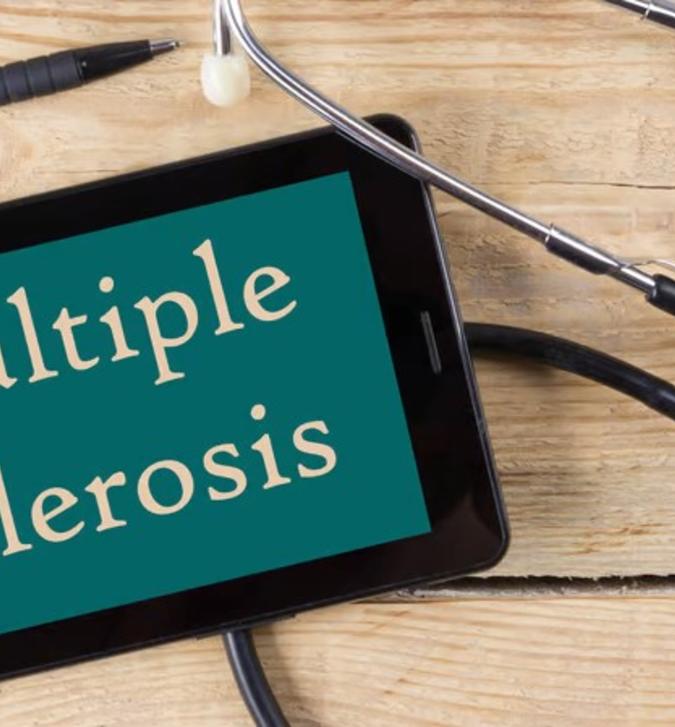
Neuropsychology one of many disciplines that help care for patients with Parkinson’s
According to the Parkinson’s Foundation, nearly one million people in the United States are living with Parkinson's disease (PD), which is more than the combined number of people diagnosed with multiple sclerosis, muscular dystrophy, and Lou Gehrig's disease (amyotrophic lateral sclerosis). This number is expected to rise to 1.2 million by 2030 as approximately 60,000 in this country are diagnosed with PD each year.
Parkinson’s disease usually affects people around the age of 60 years but can occur earlier. It is diagnosed in more men than women.

“PD affects the basal ganglia, the area of the brain that produces chemicals needed to produce smooth, purposeful movement,” said neuropsychologist Erin Holker (pictured here), PhD, ABPP-CN. “Reduction in dopamine production and changes in acetylcholine [an ester of acetic acid and choline] may account for the movement and cognitive changes that come with Parkinson’s.”
According to the National Institute of Neurological Disorders and Stroke (NINDS), the four primary symptoms of PD are:
- Tremor - shaking that has a characteristic rhythmic motion
- Rigidity - muscle stiffness or a resistance to movement
- Bradykinesia - slowing of movement that can make it difficult to perform simple tasks or rapidly perform routine movements
- Postural instability - impaired balance and changes in posture that can increase the risk of falls.
Other symptoms may include difficulty swallowing, chewing, or speaking; emotional changes; urinary problems or constipation; dementia or other cognitive issues; fatigue; and problems sleeping.
Many possible causes
There are many possible answers for what causes Parkinson’s disease. “It’s not always known,” said Holker. “Genetics may directly account for the disease about 15 percent of the time. The other 85 percent seems to have a combination of genetic and environmental factors. For most cases, the disease occurs without a clear cause.”
A large part of Holker’s clinical work is with Parkinson’s disease and other movement disorders. “As a neuropsychologist, I do assessments to understand thinking, mood, and emotional functioning with these patients,” she said. “While Parkinson’s disease is a movement disorder, it also has a variety of non-motor symptoms including changes in thinking, such as with memory, processing speed, attention, and problem solving. Because of the areas of the brain that are affected, PD is commonly associated with emotional changes that might include anxiety, depression, or apathy.”
Compulsive behaviors
There might be compulsive behaviors associated with PD as well, including gambling, sex, buying things, or a compulsive need to take Parkinson’s medications, according to Holker. In addition, sleep can be impacted. “All of these non-motor symptoms can affect thinking along with quality of life,” she said. “When I am working with someone who has Parkinson’s, I assess all of these different factors to help the patient’s treatment team know what to focus on to reduce their symptoms and improve their lives,” said Holker. “I will often assess people soon after diagnosis, and then follow them yearly or every couple of years to update their treatment plans. I also evaluate everyone who is being considered for deep brain stimulation surgery to help treat their Parkinson’s disease symptoms.”
Working with PD patients is a collaborative effort. “At the U of M, we are fortunate to have a stellar multidisciplinary Movement Disorders Team that includes neurologists, neurosurgeons, neuropsychologists, nurses, pharmacists, and others,” said Holker. “From a professional standpoint, being part of a team that is focused entirely on improving treatment and quality of life for people with Parkinson’s disease and related disorders is really a highlight of my work. I also very much enjoy speaking with support groups about cognition and emotional functioning in Parkinson’s disease.”
PD research
In addition to her clinical work, Holker is involved in a variety of studies about Parkinson’s disease and other movement disorders. As part of the Clinical Core of the Udall Center of Excellence for Parkinson’s Disease at the University of Minnesota, Holker works with PD patients who are undergoing deep brain stimulation surgery. “I’m interested in cognitive and other non-motor predictors of success following surgery, as well as understanding how the surgery itself may affect cognition and emotion,” she said.
The impact of apathy in deep brain stimulation candidates with PD is another area of research interest for Holker. She notes that there seems to be patterns of cognitive performance that coexist with apathy. “If apathy is present before surgery, it might predict how the patient will do cognitively afterwards,” she said. “If we identify and treat the apathy before, will it have a positive effect on surgical outcome?”
Sleep disrupters
In addition, Holker wants to understand the role of cognition in certain sleep disrupters, such as REM sleep behavior disorder during which people physically act out their dreams, which is common in Parkinson’s disease. “If the disorder is treated early, it may ultimately help predict, delay, or ideally, halt the Parkinson’s disease process,” she said. “REM sleep behavior disorder can happen years before onset of other PD symptoms. Being aware of that makes it possible to develop some sort of early treatment.”
Holker is paying lots of attention to a recent trend in treating patients with Parkinson’s — the role that exercise plays. “The more I learn about it, the more I’m struck by how important it is,” she said. “If I could recommend one thing for PD patients, it’s a program of regular exercise that combines both strength training and cardio, after consulting with their physicians. It can have a significant effect on the motor symptoms of the disease. It can also help with thinking and has a positive effect on mood and sleep.”
PD outreach
Holker serves on the board of the Minnesota chapter of the American Parkinson’s Disease Association (APDA), which provides scholarships for exercise programs that can be adapted to the PD patient’s needs. “They also partnered with the YMCA on the free Pedaling for Parkinson’s program using stationary bikes,” said Holker. “You don’t have to be a member to participate.” She added that there is a lot of research about boxing and PD and there are several such programs in the Twin Cities.
Her involvement in APDA has allowed Holker to be involved outside the clinic and her research. “In addition to lectures and workshops several times a year, APDA also provides patient aid scholarships to help cover programs, services, or activities that improve the patients’ quality of life,” she said. “This is an excellent program that directly benefits our patients here as well as people with Parkinson’s throughout the state.”
Parkinson’s disease is a complex condition that is often misunderstood. It’s more than just a movement disorder and can affect several bodily systems. “PD patients may be uncomfortable talking with their physicians about these things,” said Holker. “One of the things the U’s Movement Disorder Group has done is to create a Parkinson’s 101 video that helps people understand the early stages of the disease. Watching the video can help give them the language they need to speak with their doctors.”
Learn more:



